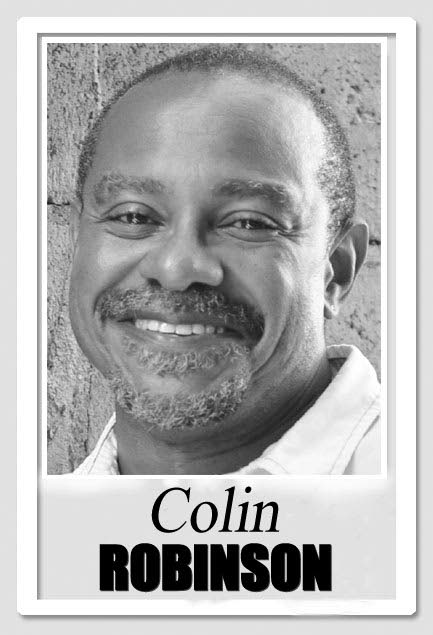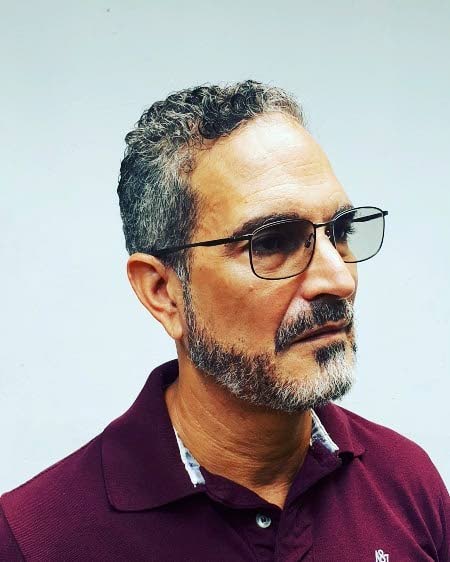Standing under an Egungun

“I am angry with the sea,” Venezuelan widower Raymer Diaz told his in-laws and his husband’s many mourners, for whom the National Drama Association had quickly fashioned a grief vessel at Woodbrook’s Big Black Box. The sea at Grande Riviere had claimed its president, Edwin Erminy, on 2018’s last day.
A series of young people gave testimony to how deeply Erminy touched their lives by modelling what it means to be a generous teacher and — for both men and women — to have an authentic loving relationship.
Oddly, I know Edwin because of the sea. I never knew him in life.
But I take his gifts — which reach far beyond any law or advocacy — into the new year — along with those of a young voice who did not speak at the NDATT wake, to whom I offer space here to ponder what those gifts meant.
•
The last image I have of him is clear, untouched, untainted by anything. He and Ray, laughing and talking in a language I am unable to speak, at the entrance to UTT’s technical theatre scenic workshop. Eight feet tall over them stood his student Olubusola Oluyemisi Chung’s final semester design project.

“An Egungun,” he said to me, envisioning the development of Chung’s design, the husband atop a ladder placing the finishing touches, a yellow African-print fabric, loyal to the earth tones of the Yoruba masquerade.
We are taught growing up that one must have different sides, that are to be displayed to different persons at varying times in one’s life. When someone continues their journey from the marketplace, the wake is where these different personalities present themselves, in the conversations about who the person is and what they meant, the images held by the persons they loved and who loved them, by the ones they mentored.
What can be said about someone who did not possess these different faces? Speaking to everyone around him, an identical image manifests itself: creative, loving, funny, inspirational, joyful, cheerful, friendly. This meant he lived his authentic self throughout his life, in all aspects.
The first time I was introduced to him, although I knew most of his work — Rhoma’s Spencer’s Carnival Madea, NTAC’s Berlin on a Donkey, Calabash Alley, Man Better Man, and Three Sisters after Chekhov — and was able to talk about it in detail, I did not know that one person was responsible, and that his was the face of the artist. We talked for hours about design, what I want to become, what I have to contribute to the development of technical theatre.
I felt like a child on Christmas Day receiving presents of two amazing men who were talented, openly gay, married, and full of love. As a young man, I never felt there was anyone locally who reflected my values and I could be inspired by. Standing before me was a couple, who were accessible and willing to be interrogated by my curiosity. Not once did they say, this is inappropriate and forward, you can’t ask whether we want children, if we own joint bank accounts, what it means to be married in a country that doesn’t protect its LGBTI community. After having been introduced merely two hours earlier, they answered each question patiently, with personal details to aid my understanding.
Over the 17 weeks that I knew them as husbands, I was convinced I had allies in my camp I could turn to for help, comfort and motivational stories. Like this one: Pulling an all-nighter for his degree presentation of a set model, his Exacto knife handle broke, and he resorted to using the blade with his fingers, resulting in them being cut repeatedly, and blood spots covering the model. “You have bled for your art,” his lecturer declared.
I began to experience buyer’s remorse for not choosing to continue studying technical theatre. But they welcomed me into the scenic workshop, allowing me to build set elements, making me feel at home. At no time was I ever asked what are you doing here, you are not in my class; but instead greeted with hugs and smiles.
I will never forget that image of Edwin Erminy standing under an Egungun, eight feet tall, and smiling, as he now dwells in the land of the ancestors.


Comments
"Standing under an Egungun"